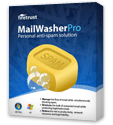Wiz's email spam & threat analysis for the week ending March 11, 2012
This past week I saw a significant drop in the amount of spam I received and a shift in the top category. For the first time in probably a year or more, Nigerian 419 scams topped the list for most spams received. Gone completely was any spam for fake casinos!
Second place went to replicas Chinese watches that rip off legitimate name brands, like Breitling. This was closely followed by spam for fake pharmacies and bogus diplomas. Drugs bought from fake pharmacies, if they ever arrive, will do you no good and may actually harm you. Buying fake diplomas won't necessarily get you hired, but they will get you fired, once your deception is discovered during routine background checks.
Runners up in spam were Russian domains pushing counterfeit goods and drugs, work at home scams, weight loss pills, male enhancement, Cialis and Viagra and three malware link scams.
The malware threats from last week were all fake Intuit invoices, with links to read invoices online. Those links all led to exploit attacks against browsers and their add-ons and plug-ins. If you clicked on a link in an email claiming to come from Intuit, scan your computer for malware Trojans and Bots. You can use a free 30 day trial copy of Trend Micro™ Titanium™ Internet Security, if you have nothing else that is current for virus detection.
The following represents my email totals and spam percentages by category. All results were obtained from MailWasher Pro, which I use to filter out spam before I download any incoming email to Windows Live Mail.
These spam statistics are derived from MailWasher Pro, which is a POP3 email filtering program that runs on a Windows desktop. It intercepts all incoming email and analyzes it, based upon several factors, the most prominent of which are my own custom spam filters.
Overview
Total incoming email: 450 (10 more than last week)
Good mail: 367 (340 last week)
Classified as spam: 83 (100 last week)
Percentage rated spam: 18% (22.7% last week)
Breakdown by category of spam
Nigerian 419 scams: 19% (4% last week)
Watches: 18% (13% last week)
Fake pharmacies: 17% (17% last week)
Diploma scams: 12% (17% last week)
Russian domain links: 9.6% (2% last week)
Cialis & Viagra: 7.3% (9% last week)
Work at home scams: 6% (5% last week)
Weight Loss HCG scams: 3.7% (4% last week)
Male Enhancement scams: 3.7% (1% last week)
Intuit fraud exploit links: 3.7%
I made the following additions or updates to my custom MailWasher spam filters
No Additions last week
The following (single or wildcard) email addresses were added to my MailWasher Blacklist:
None added
About MailWasher Pro
 I publish filters for both the old and new versions of MailWasher Pro. However, the new version allows for more lines of conditions than the previous ones. If you use a desktop application to send and receive POP3 email, MailWasher can act as a spam filter before you download email to your email client. You can learn more about the program, download a trial version, or purchase a subscription, at the MailWasher Pro website.
I publish filters for both the old and new versions of MailWasher Pro. However, the new version allows for more lines of conditions than the previous ones. If you use a desktop application to send and receive POP3 email, MailWasher can act as a spam filter before you download email to your email client. You can learn more about the program, download a trial version, or purchase a subscription, at the MailWasher Pro website.
News: MailWasher Pro is once again offering lifetime licenses, covering three computers. You should try it out and see how it works for you in reducing spam in your desktop email client's inbox.




